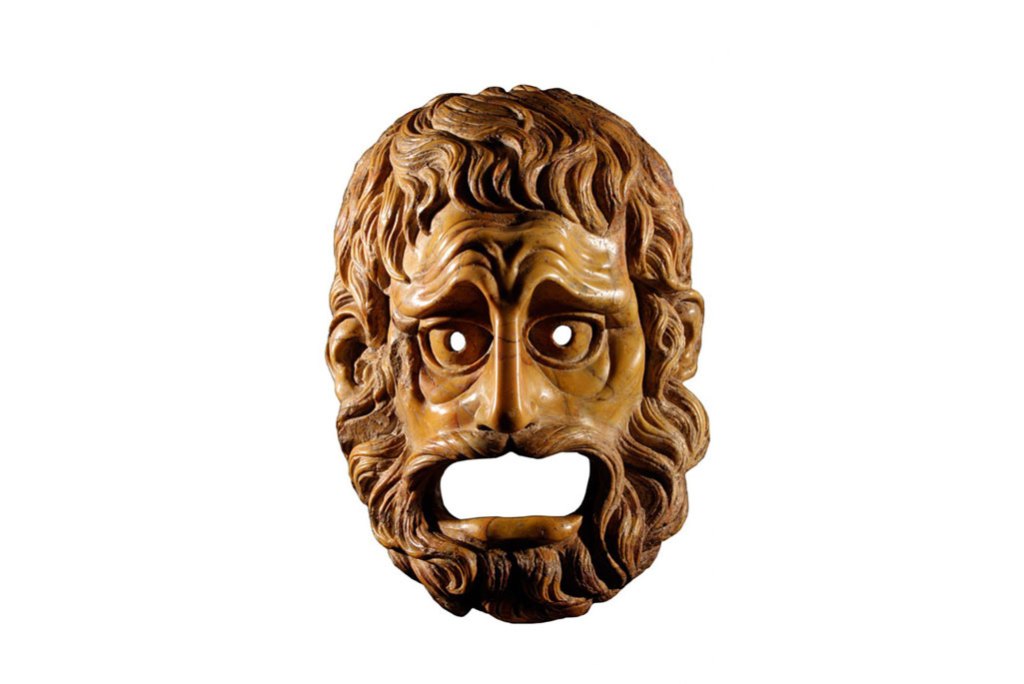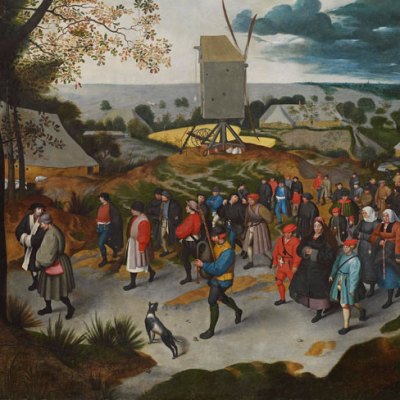New highlights every day from TEFAF Maastricht
Theatre mask
1st–2nd century, Rome
Over life-size sculptures of theatrical masks were used to decorate not only public buildings, including theatres, but also the courtyards of patrician Roman houses, as frescoes in Pompeii reveal. Like those worn on stage, they present intensely exaggerated facial features and expressions that could be read from a distance.
This tragic mask is carved from highly prized giallo antico, the fine-grained yellow marble quarried from the Roman imperial mines in the ancient city of Simitthus, modern-day Chemtou, in Tunisia. In conception, it is most like the marble tragic mask in the British Museum, with its deeply furrowed brow, sagging flesh to the cheeks, gaping mouth and curling hair and beard. The difference is that this example is more than twice its size, and the quality, detail and crispness of its carving, as well as the extravagance of its material, place it in a class entirely of its own. Moreover, the mask bears only minimal damage, and the marble appears to retain its original polished surface and patina.
Selected by Susan Moore.



